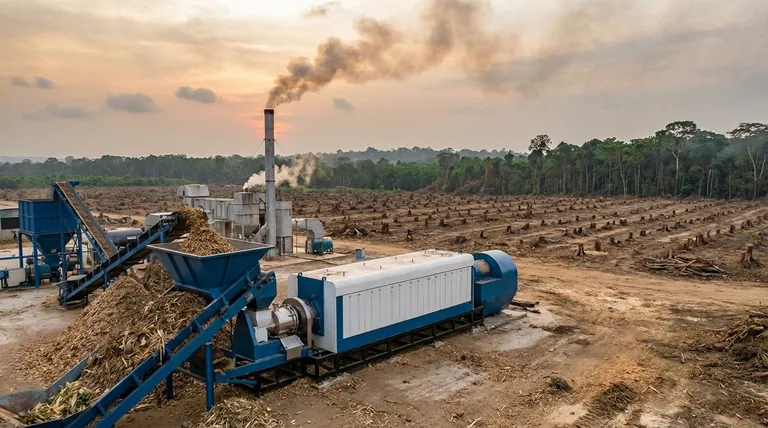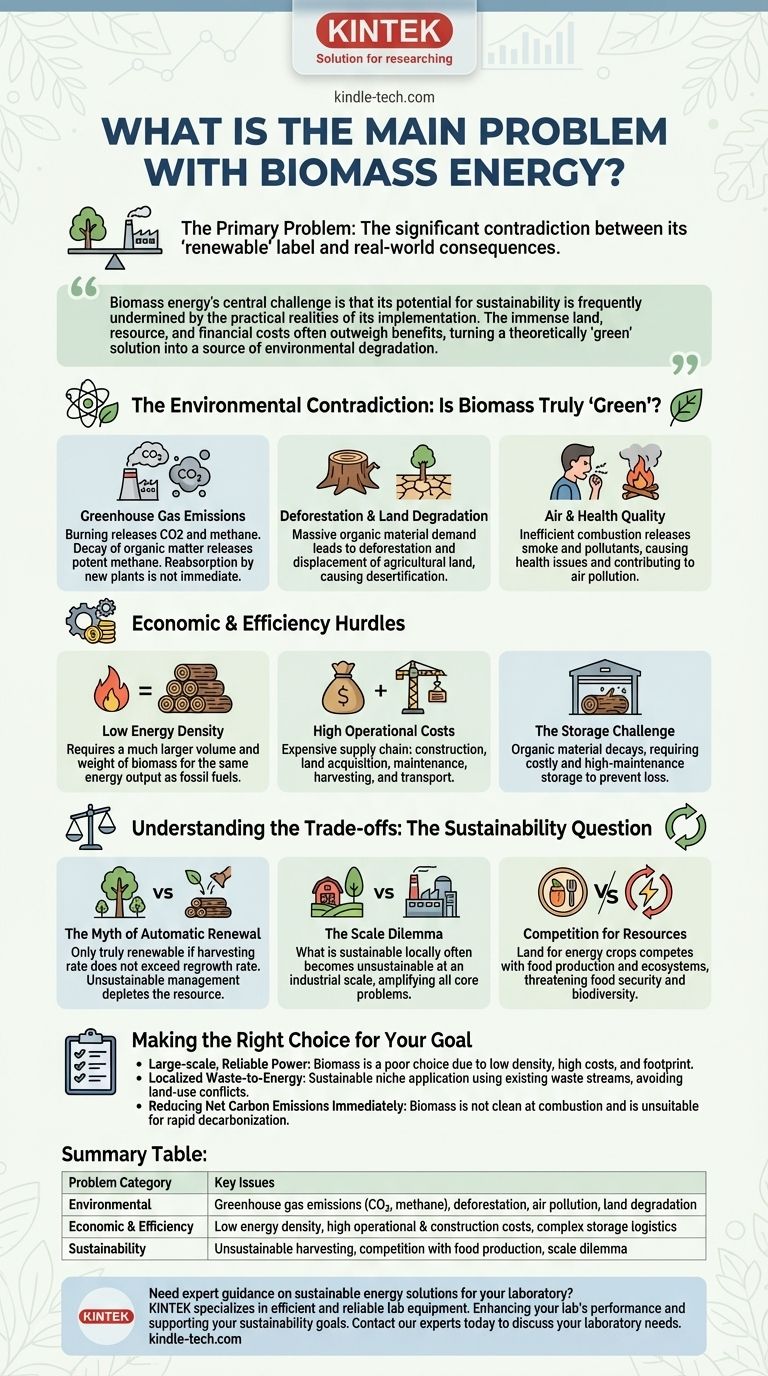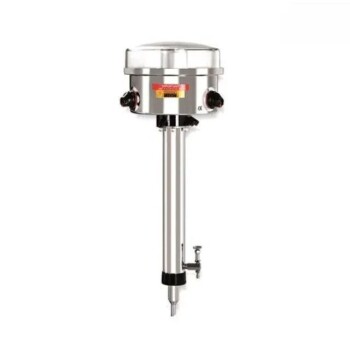The primary problem with biomass energy is the significant contradiction between its "renewable" label and its real-world consequences. While sourced from organic matter, the process of harvesting and burning it at scale often causes substantial environmental damage, including deforestation and the release of greenhouse gases like CO2 and methane, while proving to be economically inefficient.
Biomass energy's central challenge is that its potential for sustainability is frequently undermined by the practical realities of its implementation. The immense land, resource, and financial costs required to make it a large-scale power source often outweigh its benefits, turning a theoretically "green" solution into a source of environmental degradation.

The Environmental Contradiction: Is Biomass Truly "Green"?
Many assume that because biomass comes from plants, it must be environmentally friendly. However, the process of converting this organic matter into usable energy introduces several critical environmental problems.
Greenhouse Gas Emissions
Burning biomass releases carbon dioxide (CO2) directly into the atmosphere. While new plants can reabsorb this CO2 over time, this process is not immediate, and large-scale burning can release massive amounts of stored carbon much faster than it can be recaptured.
Furthermore, decaying organic matter used for biomass can release methane, a greenhouse gas far more potent than CO2 in the short term.
Deforestation and Land Degradation
Generating substantial energy from biomass requires vast quantities of organic material. This demand can lead to deforestation, as forests are cleared to either supply wood or make way for energy crops.
This intensive land use can also displace agricultural land needed for food production, leading to land degradation and desertification if not managed with extreme care.
Air and Health Quality
The combustion of biomass, especially in inefficient ways like open fires or with moist wood, releases smoke and other harmful pollutants into the air. This can cause significant health issues for populations living near biomass facilities and contributes to overall air pollution.
Economic and Efficiency Hurdles
Beyond the environmental impact, biomass faces significant practical challenges that limit its viability as a primary energy source.
Low Energy Density
Biomass has a low energy density compared to fossil fuels. This means a much larger volume and weight of biomass must be harvested, transported, and burned to produce the same amount of energy as a smaller amount of coal or natural gas.
High Operational Costs
The entire biomass supply chain is expensive. It involves high initial construction costs for processing plants, ongoing expenses for land acquisition and maintenance, and the costs associated with harvesting and transporting bulky materials.
The Storage Challenge
Biomass is organic and will decay if not stored properly. Preventing this decay requires costly and high-maintenance storage facilities. This complexity adds another layer of expense and logistical difficulty not present in many other energy sources.
Understanding the Trade-offs: The Sustainability Question
The effectiveness of biomass energy is entirely dependent on how it is managed. The label "renewable" can be misleading if the underlying practices are unsustainable.
The Myth of Automatic Renewal
Biomass is only truly renewable if the rate of harvesting does not exceed the rate of regrowth. When demand leads to unsustainable management, the resource becomes depleted, essentially turning a renewable source into a non-renewable one.
The Scale Dilemma
What might be sustainable on a small, local scale (such as using agricultural waste from a single farm) often becomes unsustainable when attempted at an industrial scale. The need to power a city or region amplifies all the core problems—deforestation, emissions, and high costs.
Competition for Resources
The land used for growing energy crops is land that can no longer be used for growing food or supporting natural ecosystems. This creates direct competition for essential resources, with potentially serious consequences for food security and biodiversity.
Making the Right Choice for Your Goal
Evaluating biomass requires looking past the simple "renewable" tag and assessing its suitability for a specific purpose.
- If your primary focus is large-scale, reliable power generation: Biomass is often a poor choice due to its low energy density, high operational costs, and significant environmental footprint compared to solar, wind, or nuclear power.
- If your primary focus is localized waste-to-energy conversion: Using existing organic waste streams, like agricultural byproducts or forestry residue, can be a sustainable niche application that avoids many land-use conflicts.
- If your primary focus is reducing net carbon emissions immediately: Biomass is not a clean energy source at the point of combustion and is therefore an unsuitable option for achieving rapid decarbonization targets.
Ultimately, the viability of biomass energy depends entirely on the context of its use and the sustainability of its supply chain.
Summary Table:
| Problem Category | Key Issues |
|---|---|
| Environmental | Greenhouse gas emissions (CO2, methane), deforestation, air pollution, land degradation |
| Economic & Efficiency | Low energy density, high operational & construction costs, complex storage logistics |
| Sustainability | Unsustainable harvesting, competition with food production, scale dilemma |
Need expert guidance on sustainable energy solutions for your laboratory?
KINTEK specializes in providing efficient and reliable lab equipment and consumables. Whether you're researching alternative energy sources or require precise analytical tools, our solutions are designed to enhance your lab's performance and support your sustainability goals.
Contact our experts today to discuss how we can meet your specific laboratory needs.
Visual Guide

Related Products
- Electric Rotary Kiln Small Rotary Furnace Biomass Pyrolysis Plant
- Electric Rotary Kiln Continuous Working Small Rotary Furnace Heating Pyrolysis Plant
- Electric Rotary Kiln Small Rotary Furnace for Activated Carbon Regeneration
- Wall Mounted Water Distillation Unit
- Electric Rotary Kiln Pyrolysis Furnace Plant Machine Calciner Small Rotary Kiln Rotating Furnace
People Also Ask
- How is energy converted into biomass? Harnessing Nature's Solar Power for Renewable Energy
- What is a disadvantage of biomass energy? The Hidden Environmental and Economic Costs
- What are the reactions involved in pyrolysis of biomass? Unlock the Chemistry for Tailored Bio-Products
- What are the advantages of pyrolysis technology? Turn Waste into Profit and Reduce Emissions
- What are the different types of pyrolysis machines? Choose the Right System for Your Output





